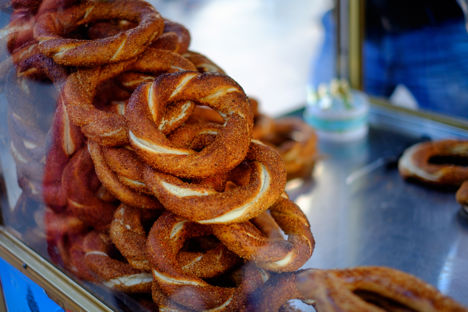
Six of Turkey's best regional dishes
We all know about kofte, hummus and baklava, but Turkey has a treasure trove of dishes making the most of simple ingredients like yoghurt, bulgur wheat and tomato. Take a look at some lesser-known specialities and say serefe! to a cuisine bursting with flavour.
Six of Turkey's best regional dishes
We all know about kofte, hummus and baklava, but Turkey has a treasure trove of dishes making the most of simple ingredients like yoghurt, bulgur wheat and tomato. Take a look at some lesser-known specialities and say serefe! to a cuisine bursting with flavour.
As our interest in international food grows, so does the realisation that many countries don’t simply have a national cuisine. This is certainly the case in Turkey; a restaurant menu in Anatolia will differ from one in Istanbul, while the citizens of Adana and Izmir will enjoy different foods on a daily basis.
As a general rule of thumb, the Aegean region (which includes Istanbul) is home to the country’s rice dishes and vegetables stews; communities living along the coast of the Black Sea tend to eat a lot of fish and corn, while the southeast is home to Turkish kebabs and pastries. There are countless dishes – many of them served cold or as part of a mezze – from all four corners of Turkey. Here are just a handful of the more obscure ones enjoyed every day.
Cacık
Few dishes are as versatile as cacık. It can be used to dress vegetables and salads, turned into a dip or simply eaten on its own as a sort of soup, and is now enjoyed throughout Turkey (although thought to have originated in Anatolia). The simple combination of strained yoghurt, chopped or grated cucumber, garlic, good olive oil and herbs is served as part of a mezze platter or simply on the side of many meals in Turkey. To make it into a refreshing chilled soup, simply water down the mixture with a few ice cubes.
Kısır
Another worthy side dish or salad from Turkey is kısır, a bulgur wheat-based dish which, in its simplest form, is flavoured with tomato purée and parsley. It originated in Mersin, a city on Turkey’s south coast, but has branched out into other regions where it can also include cucumber, garlic, onion, lemon and pomegranate molasses. It’s always served cold, and is often made the day before serving to allow the flavours to infuse. Every home cook in Turkey has their own version of kısır, and it’s almost always present at any large meal.
Lamb Güveç
Güveç is a traditional Turkish earthenware pot, which is what this slow-cooked lamb (kuzu) casserole is cooked in and named after. It’s incredibly easy to make – after browning the lamb and frying aubergine, onions, peppers, garlic and chilli, everything is placed into the güveç with paprika, cumin and tomato paste and placed in the oven for around two hours. Only a very small amount of water or stock is added, allowing the ingredients to caramelise in the pan. Cover with fresh herbs and a dollop of yoghurt for a warming, hearty dish full of Turkish flavour.
Ezo gelin soup
Soups are incredibly popular throughout all of Turkey, served both hot and cold, usually for breakfast or at the start of a larger meal. Ezo gelin is arguably the most famous, made with red lentils, bulgur wheat, tomato paste and plenty of Turkish hot red pepper paste. It’s named after Ezo, a bride from twentieth century Gaziantep who was unhappily married and made the dish in a bid to impress her mother-in-law. There’s also yayla soup, which is made with rice and yoghurt, and the simple but delicious mercimek çorbası, made from blended red lentils.
Simit
Turkey certainly has its fair share of breads, but simit is arguably one of the most popular. The circular, bagel-like loaves have been sold as street food since the sixteenth century, and feature heavily in Turkish artworks as a symbol of daily life in Istanbul. They’re often topped with sesame seeds and enriched with a molasses-like syrup, which helps create an extra crunchy crust, and eaten plain alongside tea.
Hünkâr Beğendi (Sultan's Delight)
This famous lamb stew was originally cooked for Sultan Murad IV in the seventeenth century, who enjoyed it so much it was called Hünkâr Beğendi (‘the Sultan liked it’). It’s essentially a stew of lamb, chillies and tomatoes served on a bed of aubergine purée that’s thickened with a roux and hard Turkish cheese.
Go Turkey exhibited these dishes (and many more) at Taste of London Summer 2016, with chef Ed Baines serving up Sultan’s Delight to the crowds over the weekend. For more information, visit their website.


